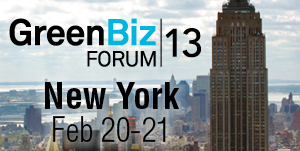June 2004 Volume II Number 2
Net Contents
I. Network Presentation
Key Learnings
Perspectives
II. What’s Next?
III. The Women’s Network for a Sustainable Future
The Concept of the Network
I. Network Presentation
Many thanks to those who attended WNSF’s first Washington, D.C. luncheon panel on May 14: “Toward True Sustainability Reporting: Balancing Social, Economic and Environmental Priorities.” The event, co-hosted by Weyerhaeuser Company at the Environmental Law Institute in Washington, D.C., explored several approaches to internal and external sustainability reporting and the advantages and disadvantages of standardization.
Key Findings
- Companies should not wait for government to regulate sustainability reporting but drive the process themselves. Stakeholders and the public are demanding more information.
- The demand for sustainability reporting is growing. While most inquiries still come from so-called professional stakeholders, such as NGOs, institutional investors and community organizations, more customers and ordinary people are asking for increased transparency.
- Companies should involve high-level management throughout the company in sustainability issues and reporting to make sure the topic gets the priority it deserves.
- Standardization of reporting, while worth targeting, is still probably a distant goal at this moment in time. Some companies are still scrambling to release sustainability information to the public in a sensible, comprehensible way.
- Setting comparable standards makes the most sense for companies within the same industry.
- Companies are likely to make progress on sustainability when they sense a competitive advantage to doing so.
- Sustainability resonates with employees.
- They want to be proud of their company and like to know it cares. This positive attitude can be further enhanced by building sustainability issues into employee performance evaluation.
Perspectives
Moderator: Ann Goodman, Acting Director, WNSF.
Corporate: Sara Kendall, Vice President, Environment, Health, and Safety, Weyerhaeuser Company; and Clair E. Krizov, Executive Director, Environment and Social Responsibility, AT&T, and member of WNSF’s board of directors.
Government: Jay Benforado, Director, National Center for Environmental Innovation, U.S. Environmental Protection Agency.
Leslie Carothers, President of the Environmental Law Institute, an independent, non-partisan education and research organization, welcomed those in attendance. Having been a professional environmentalist for over 30 years, she underlined the value of the Women’s Network for a Sustainable Future, explaining: “There are a lot of women in this field with significant responsibilities, and it’s great that the organization exists to promote the causes.”
Sara Kendall explained how Weyerhaeuser’s first sustainability report, for the year 2002, “Roadmap for Sustainability,” is an example of reporting tailored to the company’s challenges. She called the process of handling and reporting sustainability issues a “journey.” The second yearly report which monitors the journey toward the company’s sustainable future, will be published this summer.
According to Kendall, sustainability is about a balanced triple bottom line that combines the financial, social, and environmental elements. For example, at Weyerhaeuser, a natural resources company, a healthy triple bottom line depends on a healthy eco-system. Environmental sustainability – sustainable forestry, conservation of natural resources, and pollution reduction – plays a pivotal role in ensuring positive long-term performance. The financial and economic issues are just as important. Underlining the importance of economics, Kendall said: “We obviously have to make money, to be able to protect the environment and to meet our social goals.” She pointed out, among other things, that many employee retirement funds are invested in Weyerhaeuser’s stock. The company has a particular responsibility to deliver solid financial performance. Besides caring for employees and applying ethical business practices, attending to the social aspect of sustainability means involving the community in the reporting process. Said Kendall: “Open communication is a word that is often used, but often means “we tell you what we want to.” Communication, to be effective, has to be transparent.” Companies have to provide the facts, she said, to give their stakeholders the opportunity to form their own opinions. Kendall addressed three historical stages of sustainability reporting and transparency:
- low transparency, when only the government and maybe neighbors requested accountability
- some transparency in performance, process, and environmental issues, demanded by the government, the public, NGOs, and investors
- higher transparency in processes and performance, with companies answering not just to the government, the public and NGOs, but increasingly entering into exchanges with customers and investors.
Most of the information published in Weyerhaeuser’s first sustainability report was available before, Kendall said. But it wasn’t connected in the way it now has been outlined in the “Roadmap for Sustainability.”
Clair Krizov highlighted the fact that AT&T’s environment and social responsibility reporting includes internal and external communications. AT&T was one of the first companies to place Environment and Social Responsibility Communications on the Web. Relying heavily on the Internet, the company uses the Internet as an internal communications tool to connect with their 60,000 employees about Environment, Health, and Safety (EH&S) issues. Depending on the current topics, 10 to 50 percent of employees visit this AT&T internal EH&S Web site every month. Besides practices, policies, tools, programs, legal, regulatory, and contact information, the internal EH&S Web site also offers employees EH&S newsletters and games. AT&T’s EH&S Organization provides EH&S updates to the Board of Directors and the Chairman. A special employee awareness survey provides communication measurement data twice a year.
The information on the AT&T external EH&S Web site that is available to the general public includes the company’s EH&S report and related EH&S articles and games. It promotes AT&T’s “Champions of the Environment,” awards given to AT&T employees who worked on community and workplace ideas to make this planet a better place on which to live. As measurement of its external EH&S program, AT&T uses Social Value Added based on net profit operating margins.
Despite the vast information placed on the Internet, AT&T still receives sustainability-related questionnaires and inquiries. “Everybody has their own questions,” explained Krizov, who sees difficulties in implementing standardized reporting: “What is the common denominator? Number of employees, number of facilities?” In addition, Krizov noted that if a primary goal is to integrate environment and social responsibility considerations into everyday business activities and decisions, then how does one measure integration?
Jay Benforado acknowledged that sustainability cannot be mandated through regulatory means. “Inspections and Permits are not enough,” he said. Demand for information should be the driver for disclosure, and he counts on companies to take the initiative. “The business community has to provide leadership.”
Collaboration between government and certain industry sectors could help to improve both regulated and non-regulated information, said Benforado. But sustainability has to move beyond compliance with a government-driven system. Possible tools include:
- a leadership committee with high-end companies
- working with the public
- partnerships, volunteer programs
- setting performance goals
- an environmental management system to get executives to look at the products, processes, and so on.
Benforado also advocated the Global Reporting Initiative (GRI) template that is still adaptable to different industries and companies. “Standardization of how to report to the public is needed but it is too early.” He suggested learning from companies’ different approaches. Corporations should be encouraged to try various ways of finding good models for a standardized reporting blueprint.
II. What’s Next?
Look for an email invitation to the next NYC luncheon panel. “ETHICS AND SOCIAL RESPONSIBILITY: CONVERGENCE OR DIVERGENCE?,” to be hosted by Bertelsmann on October 4.
III. The Women’s Network for a Sustainable Future
The Concept of the Network
The Network provides a forum for business and professional women to congregate, reflect, and act on the converging issues of corporate social responsibility and sustainable development. Through meetings and simple electronic support tools, the Network aims to facilitate the exchange of experiences and best practices on these vital workplace issues. By creating a new network of executive women, the Network seeks to improve responsible practices in workplaces; sensitize corporate culture more generally to issues of sustainability and social responsibility; and encourage a public commitment locally, nationally, and internationally to sustainability principles.
The Women’s Network for a Sustainable Future is a 501c3 organization.
For more information, please contact:
Ann Goodman, Acting Director
Women’s Network for a Sustainable Future
Please direct inquiries to:
Eugenia.shafer@us.interfaceinc.com
Fiscal Agent:
National Environmental Education & Training Foundation
1707 H Street NW, Suite 900
Washington, D.C. 20006
202-833-2933
WNSF Board Member/NEETF Liaison: Deborah Sliter, Vice President of Programs
Board of Directors: Linda Descano, COO, Women & Co., CitiGroup; Muni Figueres, formerly of the Costa Rican Foundation for Sustainable Development; Joanne Fox-Przeworski, Director, Bard Center for Environmental Policy, Bard College; Ann Goodman, President, Telesis Consulting and Acting Director, WNSF; Clair Krizov, Executive Director of Environmental and Social Responsibility, AT&T; Joyce LaValle, Senior Vice President, Interface Inc.; Kathy Robb, Esq., Partner and Head of Environmental Practice, Hunton & Williams; Deborah Sliter, Vice President of Programs, National Environmental Education & Training Foundation.
This issue of Net Notes was written by Irmintraud Jost and edited by Susan Rifkin of McGraw-Hill’s ‘Writers to the Rescue’ volunteer program. WNSF thanks founding sponsors AT&T and the Ford Foundation for their generous support.
“Plans to protect air and water, wilderness and wildlife are in fact plans to protect man.” – Stewart L. Udall
“Forget the damned motor car and build the cities for lovers and friends.” -Lewis Mumford




